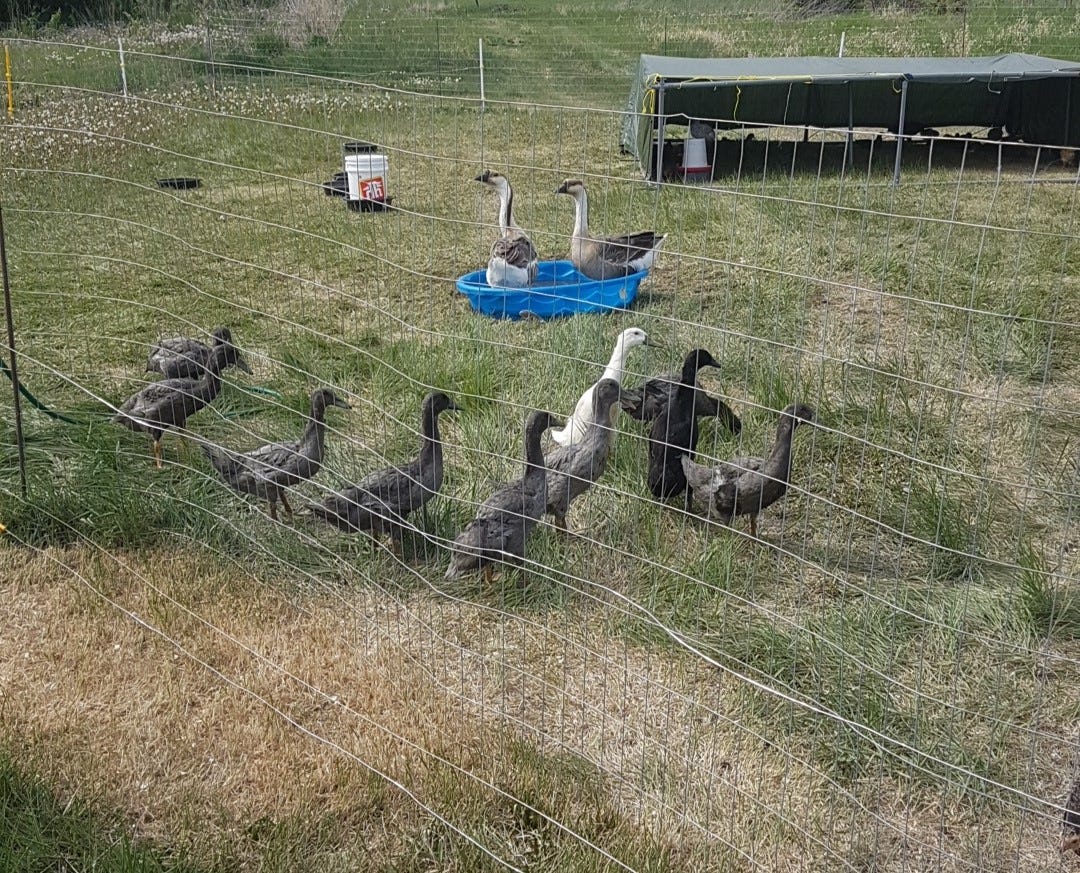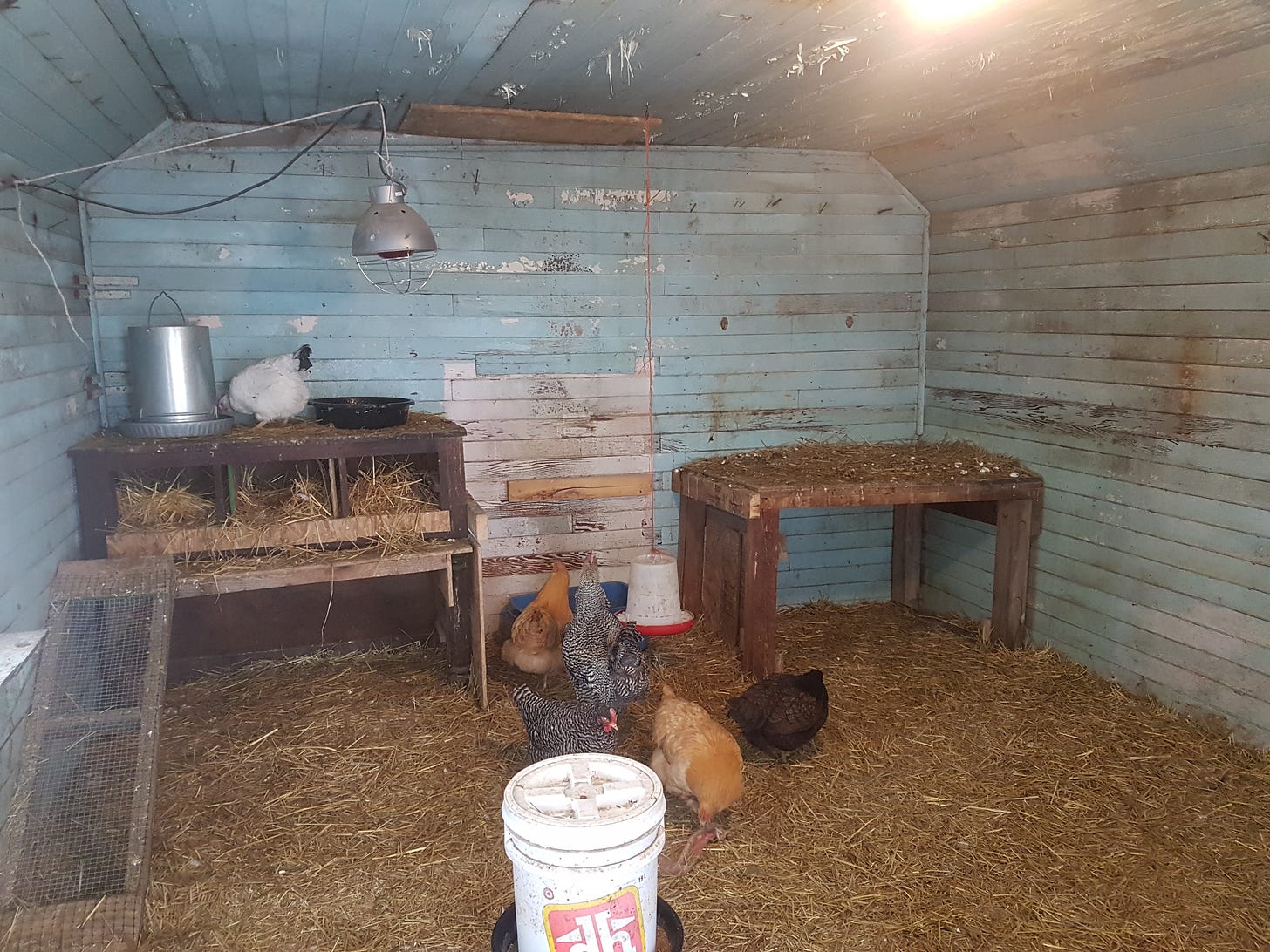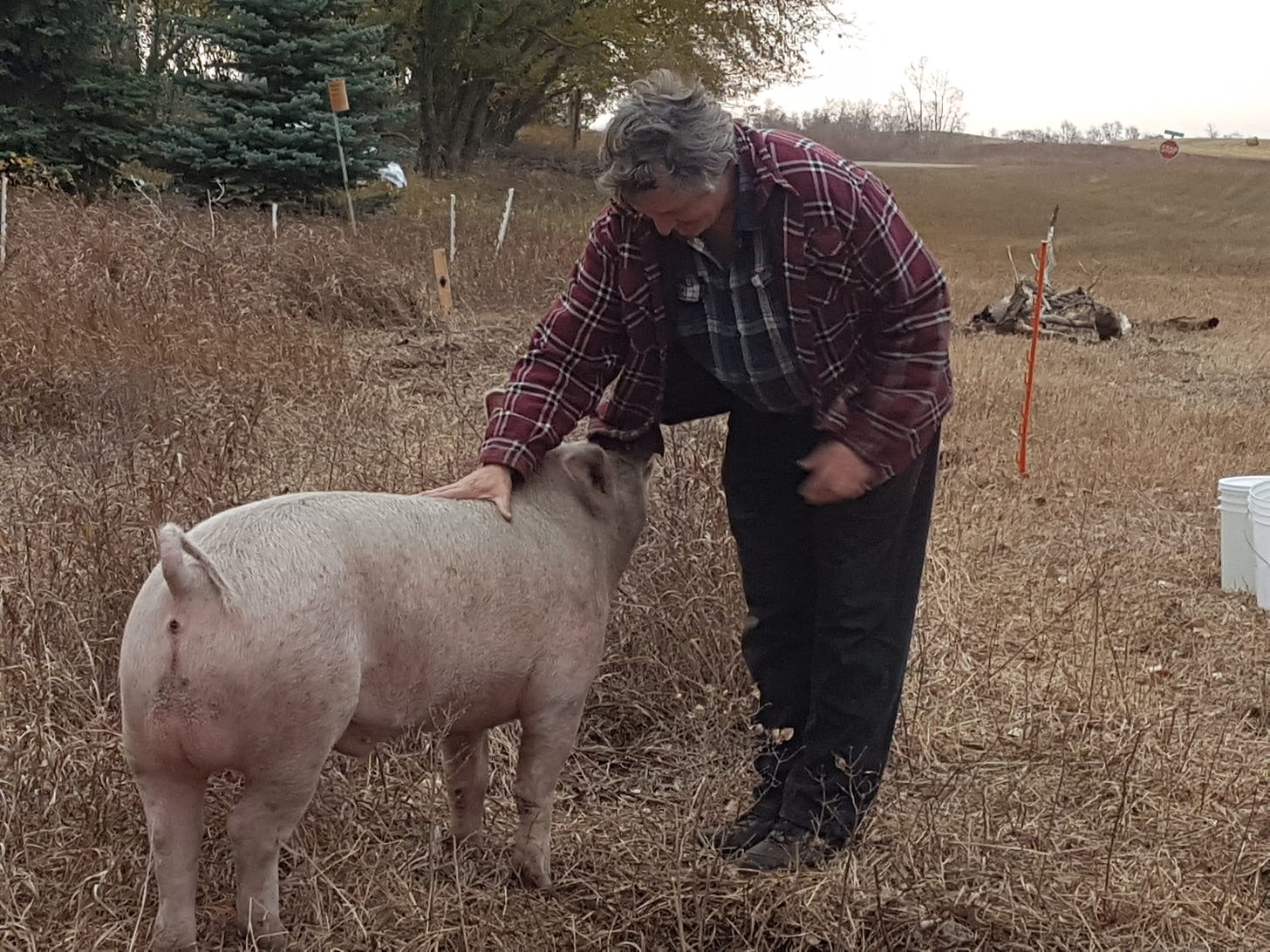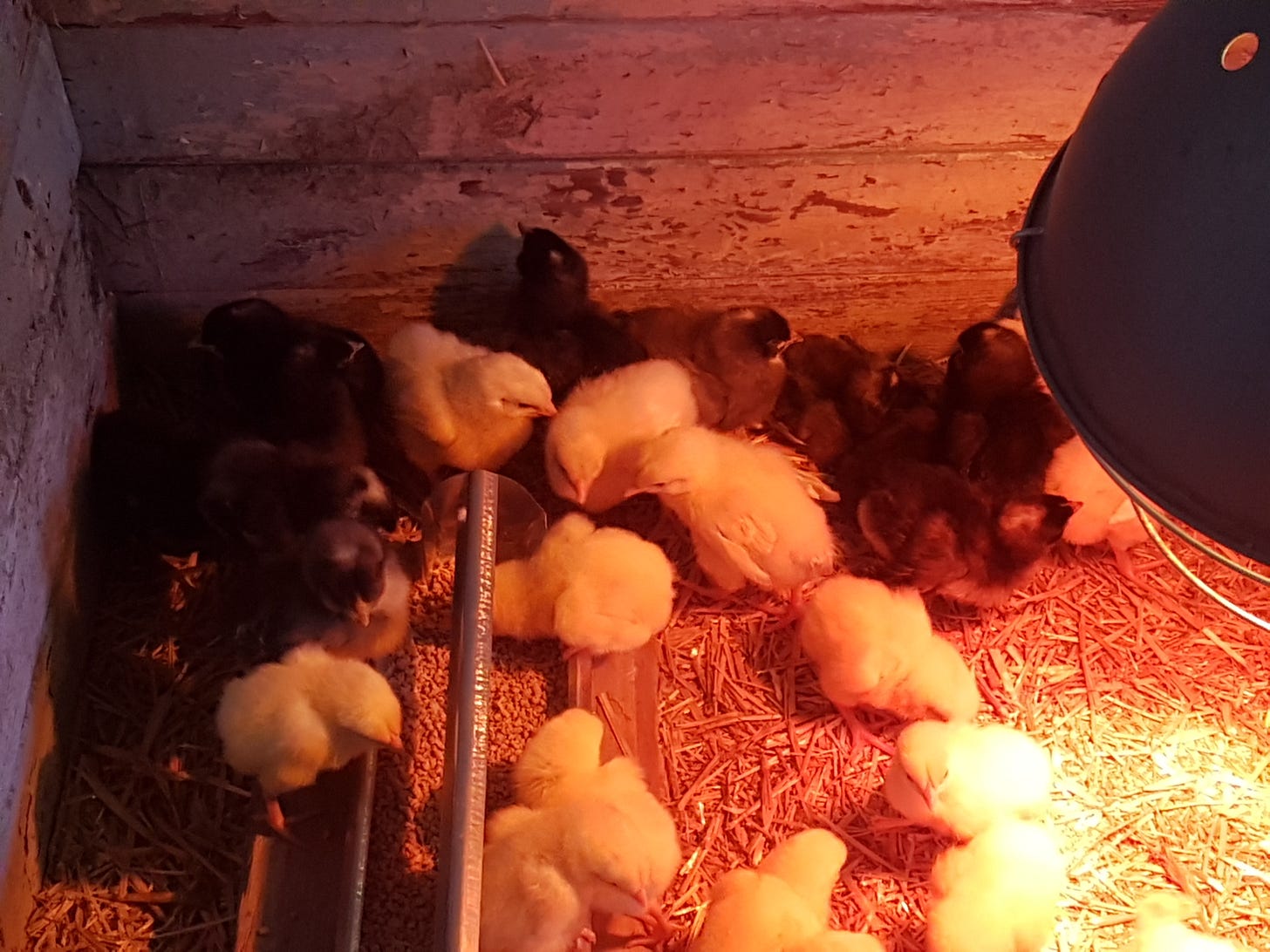Both of us, long before we ever knew of each other’s existence, have always wanted to live on an acreage away from town. We don’t do crowds just for the sake of being in them; there must be a mutual purpose. Shopping is not our thing, other than specific places like outdoor supply, firearms, books, or all manner of tools. We can get lost in Princess Auto for hours.
Life, however, had other plans; it took decades for our dream to materialize owing to circumstances in both our lives. When we bought this acreage, Tom was 56 and I was 44. It came only after a divorce battle with his ex-wife was done because she wanted a piece of the pie when Tom’s mother passed away (erroneously thinking Tom would be a millionaire).
But, here we were in October of 2018 after a month of moving things up from the place we had rented before. We spent that winter dreaming, planning…and getting on the homestead bandwagon. You know, when you get really excited at the new freedom to do almost anything.
We should get some chickens. But oh, what about ducks? Yes, guard geese too. Turkeys, must do those. That old teacher’s cottage can be the winter coop. It should work, right? Justin Rhodes and Joel Salatin were our guides on things of this nature. It seemed like a great idea.
Enter our own odd way of approaching things; we tend to reinvent the wheel where it’s not usually warranted. In this case, it wound up being a costly way to make mistakes. Trying to do it “cheaper” doesn’t always work. And going too hard on the startup numbers is just a bad idea.
Oh, it started out just fine, really. Several breeds of heritage chicks, Runner ducklings, Narragansett turkey poults and a breeding trio, and a mated pair of Chinese geese. For people that had never done this, we did OK in the brooder aspect; never lost a single one that year. Only when we got to putting everyone outdoors on grass did the trouble even start to rear its head. We lost three of the 12-week old turkeys to a weasel when they went out to the turkey tractor; OK, add extra hardware cloth around the bottom, no problems after that.
But the chickens, ducks and geese out in the big fenced area were another story. We tried fashioning a shelter out of a tarp and some old tarp shed poles, but it was very awkward to move and prone to blowing about in the wind. The Runner ducks, acting as they do and stampeding away from perceived threats, tended to mow down chickens as they did so; we lost a couple this way and later a lone Black Swede duck. The fencing was not the portable type that we should have started with; it was the rolled field fence in 50-foot sections that is more semi-permanent. We didn’t run any electric lines; this in turn really gave the coyotes free rein to just jump in one night and kill about 23 birds. Up went a double line of electric wire, and it didn’t happen again. But wind? We had a gun show the first weekend in June to attend (gunsmithing was our business), and when we got home one of those days, the shelter was upside down and a hapless duck was mashed underneath it.
All upsetting events, to be sure; overcompensation tends to happen in these cases. We built another shelter out of lumber and sale-priced roofing steel (no aluminum panels to be had out here); there, that should stay put. Only thing, we couldn’t move the darn thing, but the wind could still shift it around. In fact, during the second summer, it got flipped right over and a couple chickens got crunched. This thing was 12x12x3 feet, just think what wind would do that!
Winter was no less difficult; that teacher’s cottage was simply unsuited to the task. Uninsulated walls of double shiplap, north-facing door and window (that were absolutely not draft-free), and add in the combination of chickens and water birds; frostbite became the enemy. It didn’t matter what we tried with this over the next several winters, even removing water birds altogether still did not stop chickens suffering miserably with frostbite. If you have never seen what this does to a bird, imagine a horror scene of blood spatter; combs were bleeding and the roosters would shake their heads, splattering it all over. I felt so bad for them. Lost toes also became a thing; our first big Barred Rock rooster ended up in such bad shape by mid-summer the next year I had to cull him. He couldn’t even stand up, and when he did try the hens would pick at his feet. He had no comb left, that had frozen off. We had lost a rooster over the winter already for the same, he bled to death from his comb. If you have any consideration for animals at all, this will break your heart for them. Just chickens? Maybe, but animals we had put alot of money, work, and emotional investment into. And they do suffer pain just as much as we do.
Our second year though, we added pigs. Pastured pork was a new thing for us, but it looked easy enough to do. And really, it was. Ok, I had to finagle pens and figure out some sort of gate to let them through between, that was also easily moved to the next pen. But overall, pigs are far easier than chickens! Bigger, yes, but so much easier. They aren’t bothered by predators once they get to 25ish pounds, and electric fence keeps away coyotes while easily keeping pigs in. They sometimes would find their way out, only to be agitated wanting to get back in but not realizing they could just walk over the wire. Probably a good thing, though, since that’s what keeps them in when you only use a single electric wire about eight inches off the ground.
All said and done, yes, slaughter day that October was a cold, miserable day to be quartering pigs out in the wind, but we got the job done. Not as pretty as a professional, but for our first crack at the job it wasn’t too bad. You do have to look past your attachment; pigs can get to be like a big dog if given a little attention. They really enjoy it, and so did we.
I think it was our third year, 2021, that we tried meat birds. Not expecting how fragile they were, we lost quite a large number both in the brooder and later out on grass. We just didn’t have the right setup for them at all. They also took forever to get to any size, rather than the accelerated growth they are supposed to do for commercial purposes. Four years of raising those, and between the huge losses and other problems, we are very unlikely to get those chicks again. There is the option of getting partially grown ones from a large chicken farmer somewhere north of us, but it’s not going to be this year.
Owing to our medical issues over the last year or three, we need to take a break from livestock to focus on the garden; it has suffered neglect because time and energy has just not been available with too many other things happening. We have orders in with other people that grow pigs and chickens; we can get eggs from the same family that is growing the pigs. We will miss the good and fun parts of keeping animals, and getting our hands dirty with them (well, ok, not the actual dirty hands, constant washing sure dries you out), but we need to look after ourselves and reorganize our time.
But then I suppose the question arises: is it a homestead, if there aren’t any animals? I think the answer lies in the philosophical realm. It is said, in these circles, that homesteading is more a state of mind, rather than a physical presence. If you grow a plant in a pot in the hopes it can improve your life in some small way, you are a homesteader. If you learn to process your own food, you are a homesteader. It starts with you, not with any patch of land or living, breathing animal. If you don’t have the mindset, then it doesn’t matter the setting, you just aren’t a homesteader. It’s picking your way through failures to find the small success, and determining to do better next time. It’s in taking a step back when you need to, for your own sanity. It’s in taking one step after another, however small they might seem.
It’s seeing a brighter tomorrow, even in the darkness of today.
May your tomorrow be a bright one.
All of my content is free, but I do offer paid subscriptions for anyone who would like to support my work. If a one-time contribution is more appealing, use the “Tip Jar” below to give any amount you like. If you’re not ready to commit but enjoyed reading this post, you can follow, hit the like button, leave your thoughts in the comments, or restack to spread the word.
To see more stories in this category, go here: Our Stories and HIstory
To see all my categories, go here: Newsletters











I grew up on a small family farm. We were self-sufficient, so I know how hard it is to lose animals both financially and emotionally. Thanks for your honesty.
My heart goes out to you for all of the lost animals.